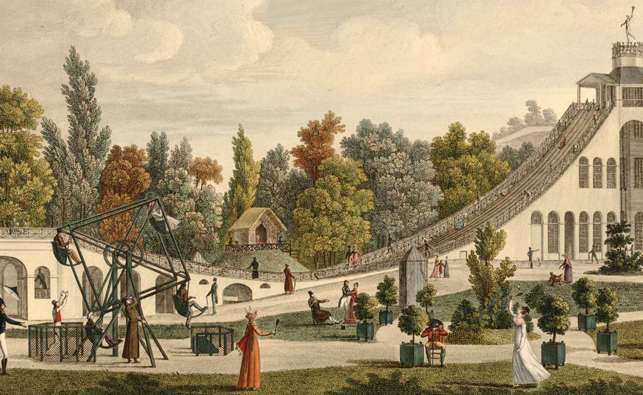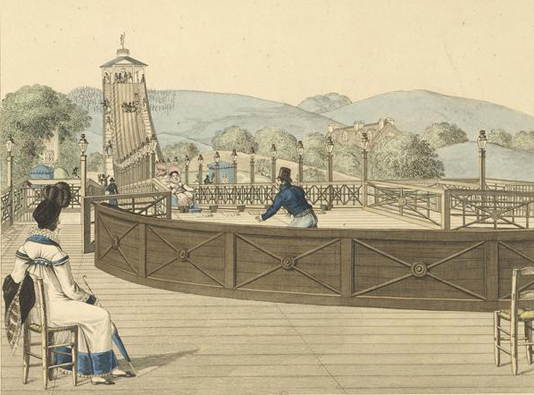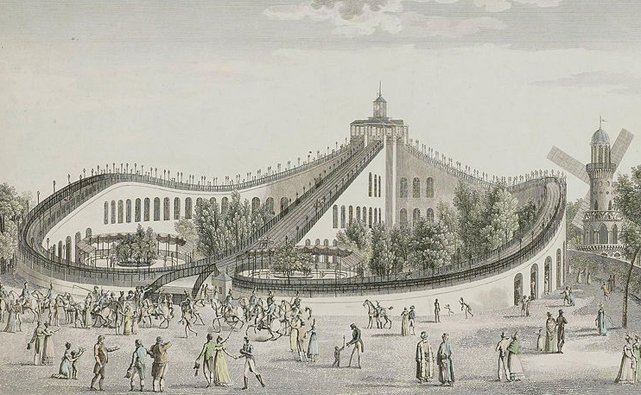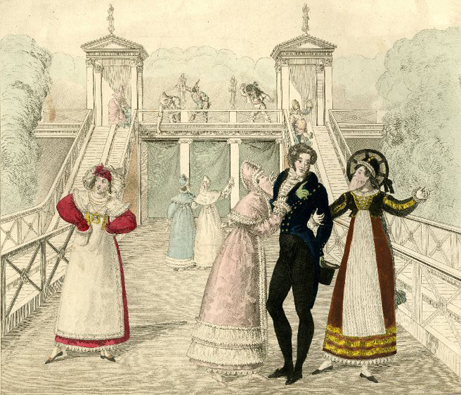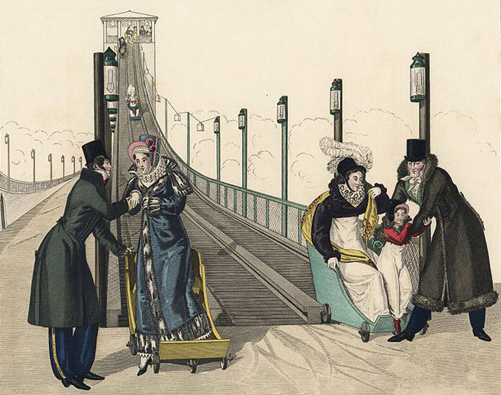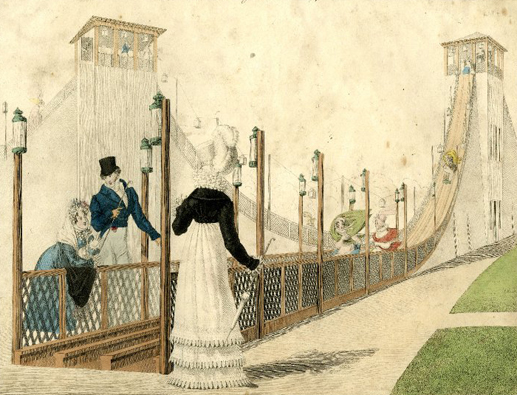The Montagne-Russe
Those of you who have read any of my previous book know I’m a total history nerd who loves to weave in the fun—and often arcane—facts that I discover in the course of researching each book. A Tangle of Serpents, my latest Lady Arianna adventure is no different. And one very delightful discovery stands out . . . but first a few general notes!
After Napoleon’s defeat at Waterloo, the Allied armies—the Prussians and Wellington’s forces—did press on into France, scattering Napoleon’s troops and forcing the emperor to flee west. France surrendered in early July, the Bourbon King was restored, and the Allied military leaders gathered in Paris to work out a plan for the occupation of France to ensure that stability was established. It was agreed that Wellington would serve as supreme commander of the Occupation forces, so his appearances in the book are grounded in actual history. (Though I have of course taken artistic license with his involvement with Lady Arianna and Saybrook.)
The Russian army joined the other Coalition forces in the city, and Tsar Alexander I did visit Paris, though I have taken a little liberty in the actual dates (and to my knowledge there was no actual assassination plot!)
And now on to the delightful research discovery, which was the montagne-russe—the precursor of our modern-day roller coasters! Roller coasters in the Regency? Yes, I kid you not—roller coasters! (Who says history doesn’t take you on some wild rides!)
The montagne-russe (which means ‘Russian mountain’) originated in Russia as a winter diversion for the aristocracy during the 17th century. Called katalnaya gorka in Russian, which means ‘sliding’ mountain, it was a hill—typically 70-80 ft high, with a 50 degree drop—made of snow and reinforced with wooden supports. The top was also coated with ice. Sleds (or sometimes wheeled carts) would be carried up to the peak, and then used hurtle down the incline. Catherine II was a great fan of this exhilarating activity, and had katalnaya korka built in the gardens of the Oranienbaum Palace outside of St. Petersburg, where she had elaborate sledding parties, including a refreshment pavilion where tea (and likely other stronger libations) were served to her guests.
As it happens, the Russian soldiers serving as part of the occupation forces in Paris after Waterloo and the final defeat of Napoleon brought their expertise in daredevil fun with them to France! Diversions were needed to keep the vast number of soldiers entertained (there were close to 200,00 of them around paris in August of 1815) and so the Russians a had the bright idea of constructing a wooden “sliding mountain” in some of the Parisian parks and using wheeled sleds to whizz down the inclines.
The montagne-russe quickly became wildly popular, drawing not only soldiers, but the crème de la crème of Parisian society. Refreshment pavilion bloomed, and the tracks become quite elaborate. I hope you enjoy the vintage prints from the era featured above, which show these amazing constructions.


